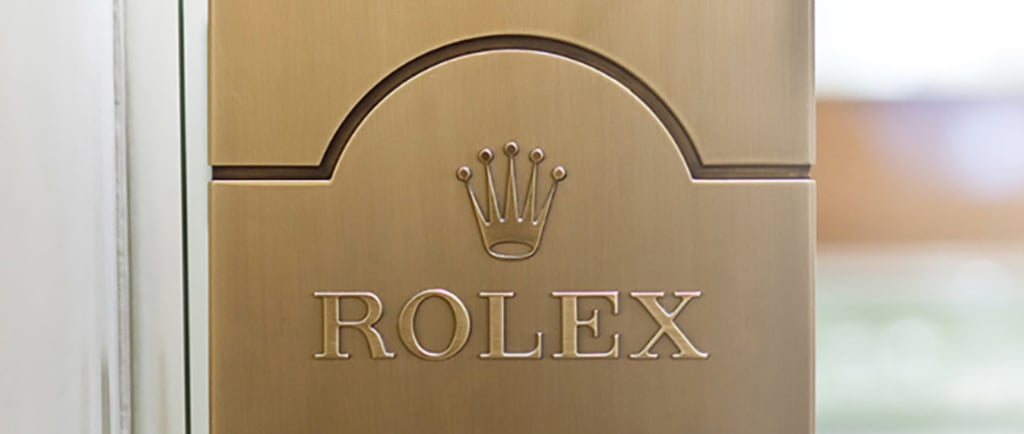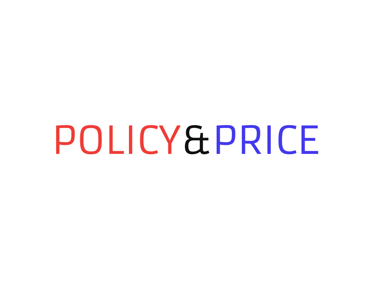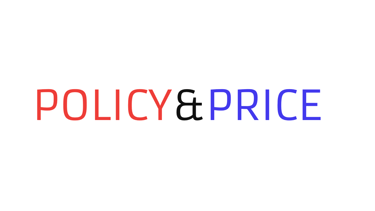The Economics of Rolex
An insight into how Rolex became one of the most successful luxury brands in the world through a perfected marketing strategy and artificial scarcity.
Oliver Bennett
4/19/20258 min read


Even before my days of loving watches, I remember my dad explaining to me the business model of Rolex. When it comes to watches, although Rolex isn't the top of the price range, it is at the top, of mindset, quality and positioning in the luxury market. The business model of Rolex is quite fascinating. Unlike many goods in our economies, Rolex's exclusivity isn't a byproduct of high demand, or scarce resources, instead, it’s a deliberate strategy.
The company limits production and creates artificial scarcity, ensuring that its watches remain highly desirable to even the wealthiest buyers. Rolex does this through the use of waitlists, which can stretch up to ten years for certain models, e.g., a Rolex Daytona. Rolex have mastered marketing to middle-upper and upper-class buyers - by making it difficult to purchase a Rolex, the brand increases its perceived value in the mind of the consumer, further increasing demand for Rolex watches, and positioning itself as a luxury status symbol; rather than just a high-end timepiece. In terms of economic theory, after over 100 years of Rolex's marketing strategy, its watches are considered price inelastic, meaning demand stays strong, regardless of price increases.
Moreover, there's no doubt that Rolex are highly aware of this, considering that Rolex's profit margin is estimated to be around 40% all together. Furthermore, its important to remember that although a common saying in watch collection is to never buy a watch as an investment, there is no doubt that people are influenced by the ROI on a Rolex watch. Considering Rolex has a 27.59% value development it can definitely be seen as influential on consumers, especially those who are not just dropping 10k for the fun of it, as it provides an alternative reasoning.
It is crucial to keep in mind that throughout all this ingenious marketing there is some really quality craftsmanship going on to create such precision and durability within Rolex watches, and I would never want to take that away from the excellent timepieces Rolex create. However, lets not overlook the fact that watch companies such as Tudor, who are owned by Rolex, make very similar models to Rolex, but due to their lesser brand reputation, their similar models at close to similar quality are priced at around 30-50% less than Rolex's.
Another smart move: Rolex is a non-profit
It may be baffling to some readers at this point that Rolex is technically a non-profit, it certainly baffled me when I found this out. However, there's a bit more to the story, and some critics have argued that under the surface this just further allows Rolex to keep even more profits. While Rolex is technically owned by the Hans Wilsdorf Foundation, a private nonprofit organisation, calling Rolex itself a “nonprofit” in the traditional sense is a bit misleading. See, Rolex doesn't operate like a charity or a traditional nonprofit organisation. Hans Wilsdorf founded Rolex, and after Wilsdorf's wife passed away in 1945, he realised that their was no one heir to inherit the company, and therefore he set up the Hans Wilsdorf Foundation, deciding that Rolex should be owned by a foundation instead of private shareholders.
Therefore unlike a publicly traded company, that gives out dividends to shareholders, Rolex reinvests most of its profits back into manufacturing new models and producing current ones at a high quality craftsmanship. However, the foundation is known to support charities, education, and cultural projects, but since the extent of this philanthropy is not publicly disclosed in detail, unlike many charities, we can assume that most of Rolex's revenue is funnelled back into the business rather than purely philanthropic efforts. Rolex's nonprofit status ultimately gives it a rather large bonus; it allows Rolex to avoid corporate taxes, and whatever amount The Hans Wilsdorf Foundation does donate can likely be used as a tax-deductible expense, further reducing Rolex’s tax liabilities. Although there are no shareholders to take these profits that Rolex thrive off of using their once again, ingenious tactics; top executives, including the CEO and board members, likely receive huge salaries and bonuses. Since Rolex is a private company, its financials are not publicly disclosed, but given its estimated annual revenue of around $10 billion, high executive compensation is almost a certainty.
There are two important things to note when discussing this part of Rolex's business. Firstly, the current philanthropic affairs of Rolex may be less than what Hans Wilsdorf expected it to be, and he may have genuinely wanted it too take part in more philanthropy than we can estimate it is taking part in. Secondly, technically there is nothing wrong and definitely nothing illegal with what Rolex are doing here, they have simply found a loophole in our ever complex tax system, and are taking advantage of it, just like many other wealthy individuals and firms in our economies today.
Rolex’s smart advertising scheme: Unravelled
Advertising is simple, and so is brand association. You advertise to those who are most likely to buy your products, for example, Uber Eats advertise on TV, because people who might not feel like cooking—are likely watching and can be easily tempted to order food. However Rolex has it down to a fine art, and they don’t just use it to gain potential customers - they also do it too further their already prestigious brand reputation. Instead of sponsoring teams or leagues in the most watched sports, for example football, Rolex associates itself in the wealthier sports of society, such as tennis, golf and yachting. Not only does this expose them to wealthier individuals, but it once again, tags them with high status.
This can be seen even more in Rolex’s ambassadors, such as Roger Federer. A man who exemplifies class, skill, and hard work, in one of the most distinguished sports. By affiliating themselves with Federer, Rolex boosts its brand image within the consumers mind, to an almost legendary status, like Federer himself. While Rolex keep their advertising fairly limited, their goal to maintain their prestigious brand image to achieve continuous high demand can be seen through an effort to target specific audiences through selective channels. As mentioned previously, this ranges from high profile events such as the Rolex Sydney Hobart (yachting) to subtle appearances in Vogue magazine. This allows Rolex to reiterate their selling point - owning a Rolex is not just about the watch itself, but about being part of a select group of individuals.
Inevitable Economic Cycles: Have they played into Rolex’s hands or worked against them?
Unlike most firms, Rolex have historically performed well during economic recessions. While many luxury goods brands depend on middle class buyers to buy their overpriced goods in an attempt to look rich, Rolex’s ability to appeal to wealthy clientele who are less sensitive to economic cycles, has allowed them to remain relatively unaffected by downturns in the economy.
Furthermore, Rolex’s success in the secondary market, with most watches appreciating in value over time, could contribute to Rolex watches being a safe asset. Therefore, although of course this would only be for the wealthy in society, some may see Rolex watches as a safe asset in uncertain times, causing demand to stay relatively similar. On top of that, waitlists may mean that if a consumers watch becomes available, out of fear that their watch may not be available for possibly another 10 years, they might buy it anyway even during an economic downturn. Rolex can play with this, increasing their production during downturns, and getting people on the waitlist their watches, to increase revenue as many people will pay for these exclusive timepieces when offered them, no matter the economic situation.
Another key economic factor that doesn’t cause any hindrance to Rolex watches unlike many goods and services, is inflation. As inflation rises, so do the prices of luxury items, and Rolex continues to maintain its status, often increasing prices while maintaining demand. Causing them to make even more revenue than they were before. Through all of this, I hope it is really clear to see how the status symbol that comes with purchasing a Rolex is so influential in the sales and success of Rolex.
Rolex’s place in the luxury watch market
We’ve established that Rolex provide a status symbol, but do all other luxury watch brands also have this ability? Considering there are companies such as Patek Phillip and Audemars Piguet that sell way above the Rolex price range, they must be more successful and provide an even higher status symbol than Rolex? Well, yes, and no.
Let’s start with Audemars Piguet (AP), famous for the Royal Oak, and all-round watchmaking luxury. AP are even more exclusive than Rolex, carefully choosing who gets certain watches, often prioritising long-time customers or those with a history of purchases (which Rolex also do at times). Furthermore, AP only produce 50,000 watches a year, compared to Rolex’s 1 million. Making them even more exclusive than Rolex.
Similarly, Patek Phillipe has always positioned itself as the pinnacle of watchmaking craftsmanship rather than just a luxury brand, with waiting times for some models being over 10 years long. Patek, similarly to Rolex, use clever marketing to exemplify their exclusivity. One of Patek Philippe's company slogans is "You never actually own a Patek Philippe. You merely look after it for the next generation." Patek reinforces its exclusivity, by marketing their products as heritage pieces, meant to be passed down generations, rather than just any old luxury good.
So, if Patek and AP, have higher quality craftsmanship, and a higher price which should exemplify higher status, how come there’s so much emphasis on the success of Rolex. Well, it's because of just that, their vast success. Instead of being like Patek and AP, appealing to just the ultra, ultra wealthy in society, with prices averaging £27,000 for an AP, and around £37,000 for a Patek, Rolex, through luxury craftmanship and lower prices (although still very expensive), allow themselves to appeal to middle-upper, and upper classes expanding their possible consumer portfolio. Combined with their effective marketing strategy mentioned above, it's easy to understand Rolex’s success.
This can further be proven through Rolex’s sales revenue success, of $10 billion in 2023, compared to AP’s revenue of 1.93 billion in 2023, and Patek’s revenue of $2 billion, reinforcing Rolex’s success over these two brands through their marketing ability, and price control, despite demand being price inelastic. It is also important to note that the middle-upper class appeal of Rolex is not only influenced by the status symbol a Rolex watch brings, but also on a deeper level, Rolex’s watches can be a goal, an achievement of success for many highly skilled, highly knowledgeable consumers, who have worked hard all their lives and finally reached that level of wealth.
What should Rolex do maintain their success in the future?
The watch market is constantly changing and evolving, and we can see many other watch brands such as TAG Heuer, changing their game up, with their “connected” smartwatch series. However, Rolex doesn’t really need to change the way their going about their business, they are the most successful watch brand in the world, and ultimately as we have seen, their current business model brings them a lot of carefully calculated success.
Another key factor to Rolex’s dominance in the luxury market in the future, will be the expanding of the upper-middle and upper classes in India and China. As wealth in these economies grows, so does the demand for status symbols, an area in which we have established, Rolex thrives in. China’s wealthy population is booming, in 2023, China had 6.2 million millionaires, and India are on the same trajectory, with vast investment into infrastructure and business within India, India’s number of millionaires is expected to double by 2030. This massive increase in disposable income within these economies over the last 20 years, has opened Rolex up to a huge number of potential buyers. This wealth will only increase, especially in India, over the next 20 years, once more, opening Rolex up to more wealthy customers. We must also consider how luxury consumption in China and India is culturally linked to status and success. Rolex, with its exclusivity and recognition, is a natural choice for affluent buyers.
Rolex’s introduction of the Certified Pre-Owned program, shows the firm is tightening its control over the secondary market, making sure resale prices remain high and reducing reliance on unauthorised dealers.
Rolex is known for incremental innovation rather than radical change, so unlike watch brands like TAG Heuer, it is very unlikely Rolex will go down the smartwatch route, as they won’t want to compromise their traditional mechanical craftsmanship, with the introduction of mechanical watches. Instead, they are likely to continue to refine their materials and movements, looking for all the quality they can get into their timepieces. As growing economies thrive, and individuals become wealthier, there is no doubt the landscape of the luxury industry will shift for the better. The future of Rolex will not be about drastic change—but about perfecting its existing strategy, in a thriving luxury market.
Economic Analysis. Political Analysis. Insightful Analysis.
Explore political and economic affairs with us.
© 2025. All rights reserved.


